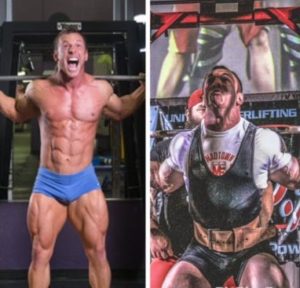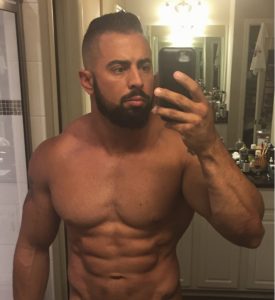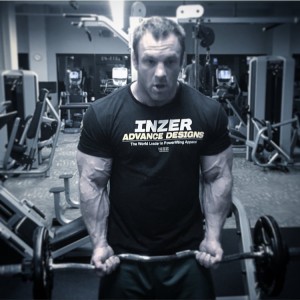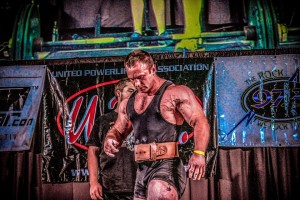
23 Jun How Can We Be Economical In Our Training?
By Tucker Loken
Anyone who’s taken an econ class has heard about game theory. Well here’s my take on it, I call it GAIN theory.
We make economic decisions every day in life – Organic potatoes are $3 per lb. and regular potatoes are 30 cents. Is the extra $2.70 worth the potential health benefits? The new car is $20,000, the used one is $10,000. Both are in good shape and unlikely to need repairs. Is the extra cool factor and feel-good-ness of the new car worth the extra 10 grand, or could that be used on other things? These little decision making moments rattle around in my head all the time. How can we apply this to our training program?
1) Investment and return – What are you getting back for what you’re putting in? If you’re getting less back for what you’re giving, you’re making a poor choice.
Let’s say you’ve got a big bucket of 100 effort points you can assign to your training. Anything over 100 effort points spent increases your risk of overtraining and injury, and your marginal benefit begins to go down. Right here, you’ve got an immediate inefficiency, and this should be curtailed almost all the time. I say almost, because in athletics there are always variables. Let’s say your competition is 4% better than you, and you have to spend 50 extra points to get 5% better than you are. If you’re neck and neck and everything is on the line, then you’ve got to spend a little more to make more in the long run. It’s a roll of the dice because your chances of injury increase, but you’re willing to take the risk, because you know that you will lose if you don’t. This type of training shouldn’t be kept up regularly though. You never want to be burning the candle at both ends, training at 150% effort for only 105% return. That’s a 45% waste, and you’ll burn out quick.
I’ve found this time and time again with myself. I kept thinking that if I push it harder with lifting I’ll get better gains, or do more cardio or eat less and I’ll lose fat more quickly. This type of over-reaching can be necessary at times, but should only be used at times when absolutely necessary.
Think of a company who’s got a competitor that’s about to take a big chunk of the market share, it would be wise for the company to spend more on advertising and product design to keep their current position, even if it means they go into the red… However, keep a company in the red too long and investors get pissed and the CEO gets fired. You’ve got to think about your body the same way, you’re an investor in your own athletic ability.
2) Long term vs short term – Let’s say you’re certain your squat will increase by 100 lbs over a given period of time.
Choice 1 – If you train balls to the wall for 1 year you can get there, but your risk increases. By training intensely all the time, your risk for potential knee and back injury, as well as CNS burnout increase dramatically.
Choice 2 – You can increase your squat by 100 lbs, but it will take 2 years instead of 1. In this scenario, your chance of overtraining and injury decreases and you can almost guarantee that you’ll be get to your goal being healthy.
If you can do something in half as long, but take twice as much risk, vs twice as long and less than half the risk, you are much better off in the long run assuming less risk and taking longer. If the question was over a 10 year vs a 5 year period, the value of time would come into the equation, but lifting weights is all about longevity. You don’t want to be the person that everyone wonders how great they could have been if only they had stayed injury free.
3) Do proper bookkeeping – Reconcile your journal entries at the end of the training period to see if your choices in movements, volume and intensity worked for or against you.
Always take stock of your training and how it’s going. If everything is going well, don’t just do more because you think it’ll help. Be scientific about the whole thing. If you have a lagging lift or muscle group and want to add a couple extra sets per week to improve it, see how you feel when you start, and see how you feel after a month.
If your squat needs to be brought up, see if a little more volume is all you need – add some front squats. If after another training cycle your squat increases the way you wanted it to, then you know that was a good choice. Usually I’d say keep it there and don’t fix what ain’t broke, but if you want to push it and see if doing sumo deadlifts instead of regular deadlifts for a while will help too, give it a shot. If your squat numbers go down or stay the same and your hips never feel fresh and strong, you can pretty much guarantee that the addition of both front squats and sumo deadlifts didn’t help you, it actually hurt you.
Effort: Added front squats
Result: Positive, PR’d in training cycle
Effort: Added front squats and Sumo dead lifts
Result: Negative, Squat total went down, body felt tired
4) Elastic vs inelastic movements
How crucial are some of the exercises you’re doing? If you want to get good at bench pressing, you’re going to have to get a bar in your hand a press it. You can substitute for other, similar movements (floor press, incline press, etc.), but either way you’re going to have to press a bar from point A to point B. If you want to squat well, you need a bar on your back. You can substitute with pause squats, high bar or low bar variation and plenty more, but that bar needs to go up and down. These are inelastic movements. They are crucial, and regardless of investment or effort, you will find a way to do them. What are some elastic and unnecessary movements that may not be doing as much as you want? If you have a quad focused leg workout consisting of squats, Pause squats, front squats, leg press, lunges, and leg extensions, you’re probably doing more than you need. Back squats are key because you need them, but what about the others? Do you need help out of the hole or just more quad focus and core stability? Depending on what you need, you may want to pick pause squats or front squats, but not both. How about Leg press, lunges and leg extensions? Do you need more unilateral/balance work? Lunges might be the one to pick. If you’re just quad weak overall and need extra stimulus, then it could be leg extensions or leg press. You may have to make some edits to your workout plan to avoid overtraining.
5) Complements vs substitutes
Milk and cereal are complements; they go together great. Beer and mixed drinks are substitutes; you’ll probably pick one or the other (unless you party hard…)
We’ve all been there – when you’re creating a workout plan for yourself you’re thinking “I want to do this, this, this and that!” but when you look at the program afterwards you realize you just created a plan with a dozen exercises per day. A key concept to think about is how much overlap are you getting and are these exercises helping you, or would something else be better in its place. If you do flat BB press, followed by 2 board press, then flat DB press, then flat machine press, you’re not getting nearly the stimulus you would from substituting in incline DB press for flat, and dips or another angle variation for flat machine press. These different angles complement each other, rather that substituting for each other. If your lower back and hip strength need work you can pick from a variety of exercises – deadlifts, deficit deadlifts, half racks, GHR, good mornings and plenty more. But at what point do you stop getting better affects from these and end up just working the same muscle in a similar movement pattern over and over? When putting a workout together you want to find exercises that go together to fill in all the holes, and smooth out all the edges together, rather than just hammering one area over and over.
Get The 10/20/Life Ebook HERE: https://www.powerrackstrength.com/books/
Latest posts by Tucker Loken (see all)
- Tucker: Another Normal Log Update - March 1, 2019
- Tucker: A Normal Log Update - February 16, 2019
- Tucker: Making Do - February 4, 2019









Sorry, the comment form is closed at this time.